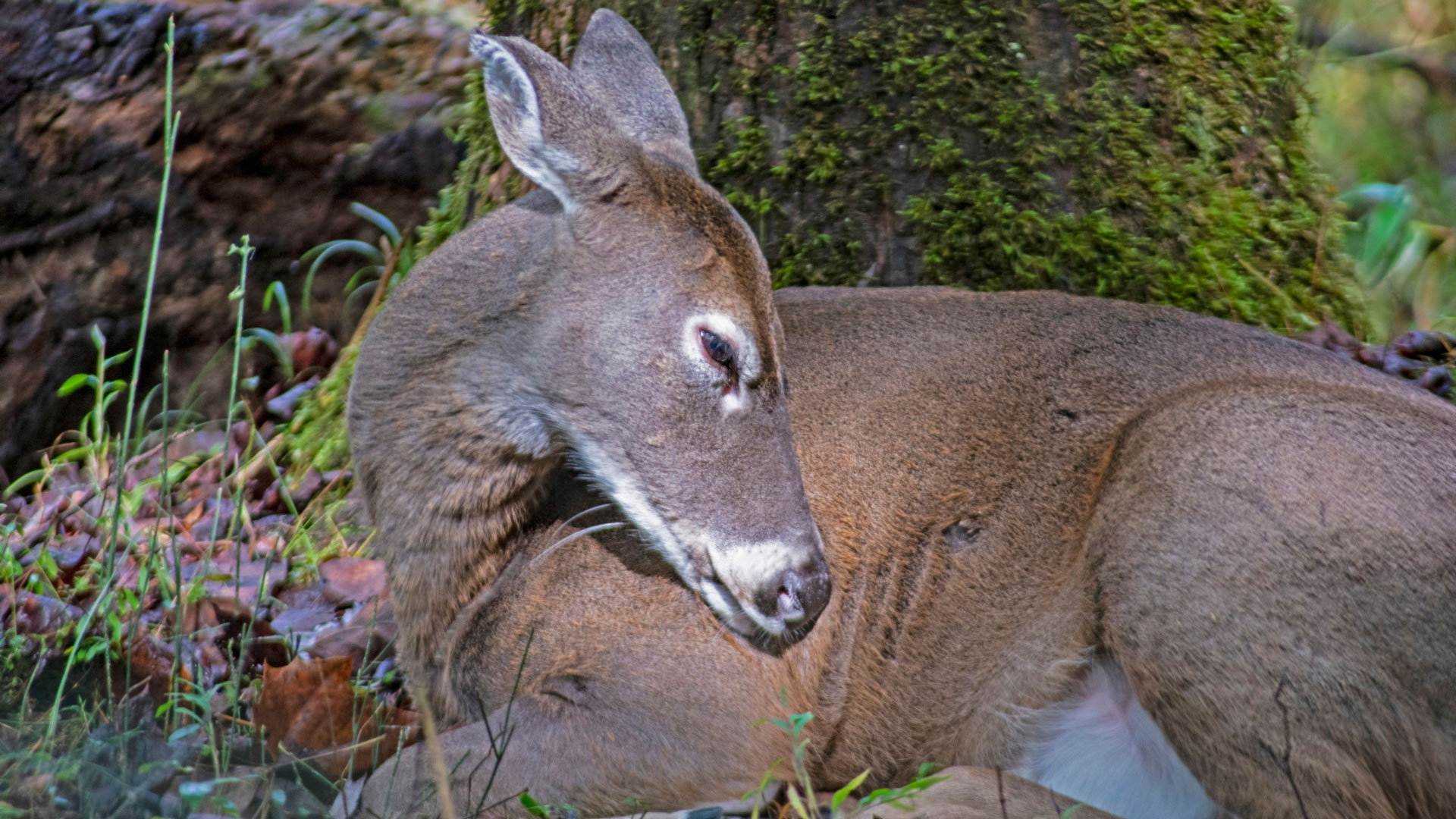
The white-tailed deer is the most-hunted big-game animal in the U.S. by a pretty wide margin, thanks mostly to their distribution—unlike pronghorn, elk or moose, whitetails can be found in nearly every state. They’re wild and wary and a lot of fun to pursue no matter how you choose to hunt them, but did you know these quirky facts about the white-tailed deer?
Their Antlers Grow Quickly
Antlers are the fastest-growing mammal tissue we have yet discovered. An adult whitetail can grow antlers at a rate of a quarter-inch per day (it’s an inch a day for elk and up to a pound a day for a large bull moose!). The shape/configuration of the antlers is based on genetics, but the size a whitetail buck’s rack will grow to is determined by a mix of his age, his genes and the nutrition he has access to. Nutrition is the biggest factor.

They Are Micro-Nappers
As prey animals, deer can’t afford long, deep stretches of sleep, so they grab their sleep in short bursts of between 30 seconds and a few minutes. They’re never fully relaxed and are able to monitor their surroundings even during a nap. They keep their ears up while sleeping so they wake immediately if a threat appears, and they can even sleep with their eyes open. This constant state of monitoring is why it’s nearly impossible to sneak up to a “sleeping” deer. If you’re hunting and a deer beds down in a spot where you can’t get to him, don’t worry—he’s not likely to stay hidden for long. On average, a deer will stand up and “stretch” about every 30 minutes.
Some Have “Pearls” in Their Stomachs
I don’t recommend you go cutting open a deer’s stomach while you’re field-dressing, but if you do, you might just find a “whitetail pearl,” known as a madstone. They look like round rocks and are often whiteish (hence the nickname “pearls”), but like oyster pearls, they’re actually made of calcium deposits combined with an irritant—in the deer’s case, usually hair. They can be as small as a marble or as large as an orange, and animals in eastern states are more likely to have madstones, due to higher calcium content in the soil.
Many different ruminants, including cows, elephants and horses, can develop madstones, but those from whitetail deer were once rumored to have medicinal power to cure snakebites and rabies. Deer with madstones were said to be much harder to kill than deer without. Of course, those are all old wives’ tales, but some hunters still collect madstones as cool hunting souvenirs.
They Can See in 310 Degrees
As prey animals with eyes on the sides of their head, deer have a blind spot (directly behind them) of only about 50 degrees, which means they can see in 310 degrees. In comparison, we humans, whose eyes are on the front of our heads as is typical in predators, only have a field of view of about 180 degrees. Deer don’t have great depth perception, though, which means they have less visual clarity than we do. Objects in a deer’s peripheral vision are equally in focus as the object the deer is looking directly at—so a deer can see you even if it isn’t looking directly at you. Scientists believe deer have about 20/100 vision—which means the level of detail a whitetail sees at 20 feet is equal to what normal human vision can see at 100 feet.
On top of that, scientists believe deer can see short-wavelength blue light the best, and they see moderate-wavelength light that they probably perceive as something between green and red. Not coincidentally, the greatest amount of daylight in the blue spectrum happens at dawn and dusk, which is when deer are most active. They can also see UV light, which is why many hunters won’t use regular laundry detergent, which often contains UV brighteners, on their hunting clothing.
Body Injuries and Antler Deformities are Related
Atypical racks with deformed antlers can be caused by genetics or by injury. If a deer injures the base of the antler (pedicel) or its skull, that antler will often grow in a deformed shape or not grow at all. The deer will carry that same or a similar deformity in the antler for the rest of its life through every growing cycle. If the antler itself was broken or injured while it was growing, it will usually remain deformed the rest of that season but will grow back normally the following year.
Injuries to the body can also cause antler deformities. Injured or undescended testes inhibit testosterone and can prevent a deer from shedding its velvet, and in some cases (particularly “cactus bucks” with cryptorchidism, which is not an injury but a birth defect), the deer may keep its antlers and the velvet year after year without shedding them. Interestingly, injuries to the legs can affect antler growth considerably. An injury to a rear leg, depending on severity, will cause a deformed antler to grow on the opposite side. An injury to a front leg will cause a deformed antler on the same side, and in both cases, the deer will likely grow the same or a similar deformity every year.
They Will Eat Meat
Of course you know that deer are herbivores, but did you know that they’ll eat meat on occasion? Particularly when browse is in short supply, deer have been known to eat snakes, birds, squirrels, rabbits, fish, mice and other animals. Most of the time, scientists think, deer are not killing the animals themselves but are feeding on carrion. Deer have even been photographed chowing down on deer gut piles and—gulp—human remains.
Biologists say this isn’t common, but it isn’t rare, either, and usually deer are eating meat to fulfill a nutritional need for protein, energy or minerals. Other times they’re just curious and experimenting in a “wonder what this tastes like?” way.















































